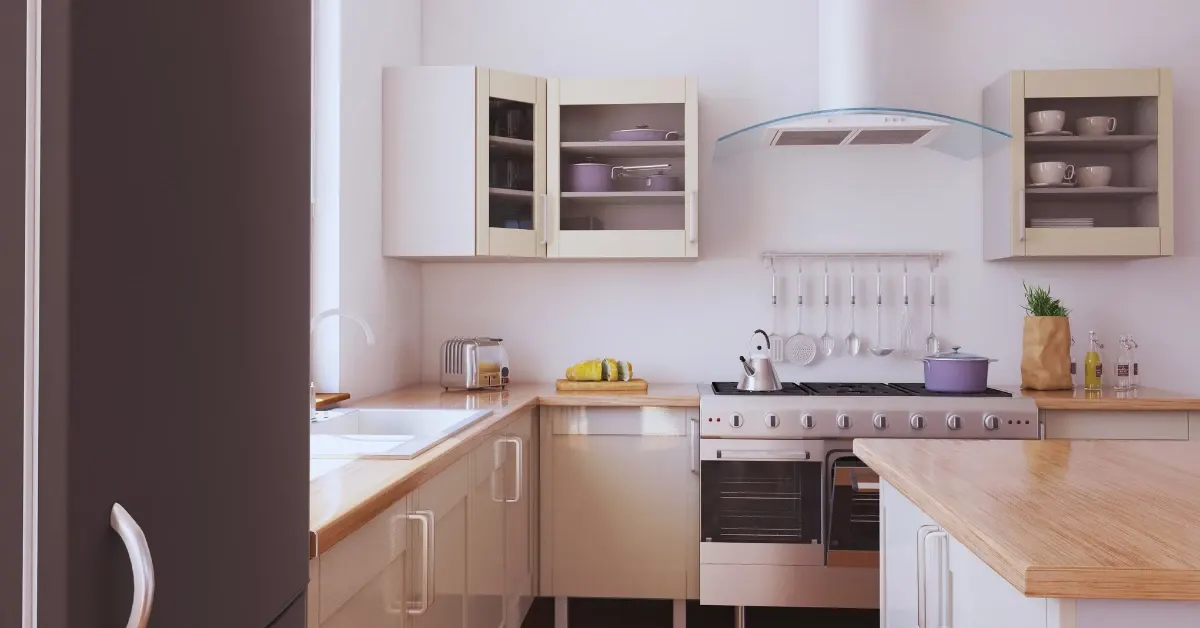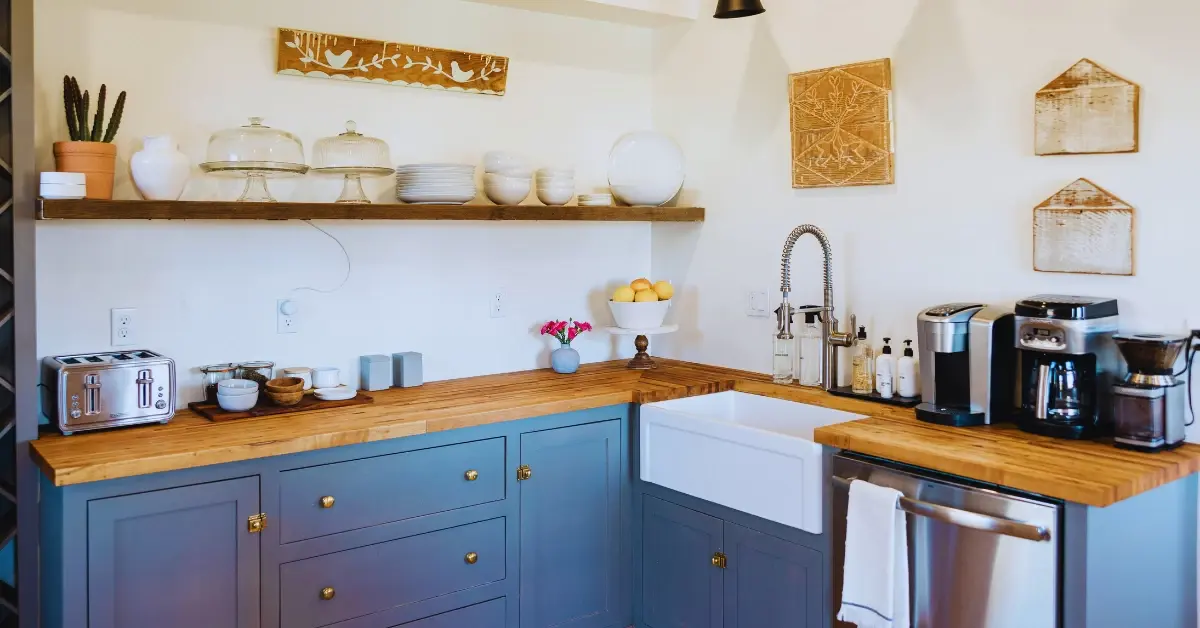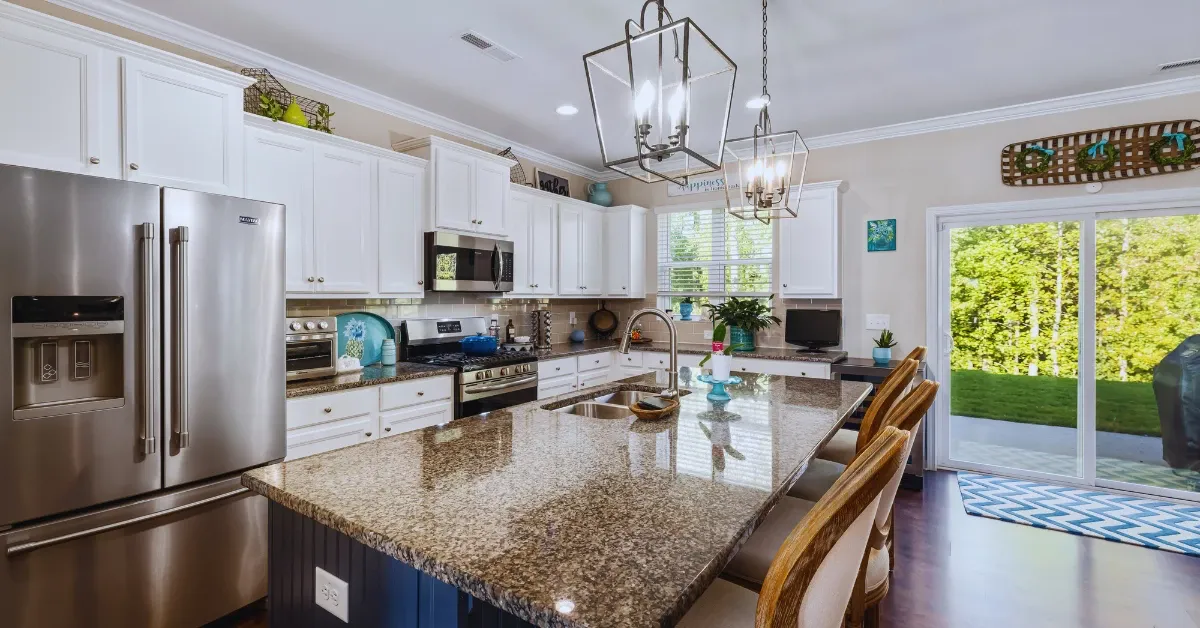How Often Should Landlord Replace Kitchen? Rental Awareness
Landlords should replace kitchens every 15-20 years. Over time, kitchens deteriorate due to wear and tear, making them inefficient, unhygienic and unsafe for tenants to use.
Additionally, installing energy-efficient appliances and fittings can save money on utility bills and reduce your carbon footprint.
It is crucial to inspect your kitchen regularly, consider the age of your appliances and cabinets, and make necessary replacements or upgrades to keep your tenants happy and safe.

The Importance Of Maintaining A Kitchen
As a landlord, you want to keep your rental property in top-notch condition, and the kitchen is a crucial part of that.

Maintaining and replacing kitchen fixtures and appliances can improve tenant satisfaction, avoid damage to property, and extend the kitchen’s lifespan.
Here are the key points to consider:
- Proper maintenance such as regular cleaning, fixing leaks, and replacing worn-out parts can help prevent costly damage down the line.
- Replacing outdated appliances, cabinetry, or countertops can modernize the kitchen, increase property value, and attract more tenants.
- A well-maintained kitchen creates a positive image of the rental property, including its overall cleanliness and safety.
How Landlords Can Benefit From A Well-Maintained Kitchen
Besides making the rental property more attractive to tenants, a well-maintained kitchen can also benefit the landlord’s bottom line. Here are some key points to keep in mind:
- A kitchen that is in good condition can attract long-term, responsible tenants who are more likely to pay their rent on time and take care of the rental property.
- Fixing minor issues early on can prevent them from escalating, which saves money and time in the long run.
- Well-maintained kitchens can reduce tenants’ complaints and turnover rates, which translates to fewer vacancies and increased revenue potential.
The Impact Of A Poorly Maintained Kitchen On Tenants
A poorly maintained kitchen can lead to tenant dissatisfaction and struggles, which can impact the landlord negatively. Here are some key points to consider:
- A kitchen with outdated or faulty appliances can lower the tenant’s quality of life, make cooking difficult, and create safety hazards.
- Poorly maintained kitchens can lead to pest infestations, such as mice and cockroaches, which can be challenging and expensive to eradicate.
- Tenants may request a rent reduction or consider moving out if the kitchen is in poor shape, leading to a loss of rental income for the landlord.
Addressing Common Misconceptions About Kitchen Replacement
Some landlords hesitate to replace kitchen appliances and fixtures due to common misconceptions.
However, it is essential to understand the benefits of doing so and avoid losing out on the advantages. Here are some key points to consider:
- Replacing outdated kitchen features such as cabinets or countertops can be costly, but it is a worthwhile investment that can significantly improve the property’s value and tenant satisfaction.
- Some landlords believe that as long as the kitchen appliances function, there is no need to replace them. However, older appliances often consume more energy and can be less efficient than newer models, resulting in higher utility bills for tenants.
- A landlord may fear that the cost of replacing the kitchen features will outweigh the benefits. However, a well-maintained kitchen can improve tenant satisfaction, lead to better rental yields, and attract higher-quality tenants over time.
Factors To Consider Before Replacing A Kitchen
Before deciding whether to replace a kitchen, it is crucial to evaluate its condition and determine if the existing fixtures can still be repaired or need replacement.

Here are some factors to consider when evaluating the condition of the kitchen:
Age of the kitchen
Most kitchens last between 10-15 years, depending on the quality of the materials and maintenance.
A kitchen that has exceeded its lifespan may have numerous issues that require replacement.
Physical damage
Check for physical damage to cabinets, countertops, and appliances. Dents, cracks, warping, and water damage are apparent signs of wear and tear.
Outdated fixtures and appliances
Beyond physical deterioration, a kitchen can show its age through outdated fixtures and appliances.
Older models of appliances may not function well or are no longer energy-efficient.
Limited functionality
A kitchen that doesn’t adequately meet functional needs may require a remodel.
This includes poorly laid-out cabinets or inappropriate placement of electrical outlets, among others.
Red Flags That Indicate A Need For Replacement
A landlord should immediately consider the need for a kitchen replacement if red flags are apparent. The following indicators denote that a kitchen needs a complete overhaul:
- Mold issues: Moisture and mold can promote poor air quality and lead to various health problems.
- Water damage: Significant water damage can result in structural issues in the kitchen or beyond.
- Faulty electrical wiring: Faulty wiring can lead to electrical surges, risk of fires, and broken appliances.
- Pest infestation: Pests can be dangerous to tenants and lead to considerable damage to buildings.
- Safety hazards: Loose cabinets, broken tiles, and sharp edges, among other structural issues, pose risks to tenants.
Determining If Repairs Or Upgrades Are Sufficient
After evaluating and assessing a kitchen’s condition, it is essential to determine if repairs or upgrading are the best approach. Here are some factors to consider:
Level of damage
A kitchen that has minor damage, limited functionality, and outdated features can benefit from repairs and upgrades instead of replacement.
Budget constraints
If some upgrades can help in meeting the essential needs of a kitchen, but the landlord has financial constraints, repairs and upgrades are a time-friendly solution.
Tenant’s needs
Take the tenants’ lifestyle and preferences into consideration when deciding between repairs or upgrades and replacement.
Cost-Benefit Analysis Of Replacement
Finally, before deciding whether to replace a kitchen or renovate or upgrade it, a cost-benefit analysis should be done to evaluate the economic viability of the project.
Here are some factors to consider while conducting a cost-benefit analysis:
The overall cost
The cost to replace should include the cost of purchasing fixtures, hiring contractors, and the length of time the kitchen would be out of commission.
Return on investment
Consider the potential return on investment of a kitchen replacement when it comes to renting and reselling the property later.
Tenant turnover
If a landlord is considering property resale and has a high tenant turnover, a new kitchen can attract tenants and increase the overall value of the property.
Frequently Asked Questions On How Often Should Landlords Replace Kitchen
How Often Should A Landlord Replace Kitchen Appliances?
Landlords should replace kitchen appliances every 10-15 years, depending on usage and wear and tear.
How Much Does It Cost To Replace Kitchen Cabinets For A Rental Property?
The cost of replacing kitchen cabinets for a rental property ranges from $3,000 to $7,000, depending on the type and quality of the cabinets.
Should Landlords Replace Kitchen Countertops Between Tenants?
It’s not necessary to replace kitchen countertops between tenants unless they’re damaged or outdated. A deep cleaning and minor repairs may suffice.
Can Landlords Increase Rent To Cover Kitchen Renovations?
Yes, landlords can increase rent to cover kitchen renovations, but they have to follow the local rent control laws and give proper notice to their tenants.
Conclusion
Keeping your tenants happy isn’t just about resolving disputes, it’s about maintaining their living space too.
If you’re wondering about the kitchen’s overhaul, you should typically consider replacing it every 10-15 years.
But remember, it also depends on wear and tear. So, you need to keep your eyes open!
Reference
https://www.courts.ca.gov/documents/California-Tenants-Guide.pdf